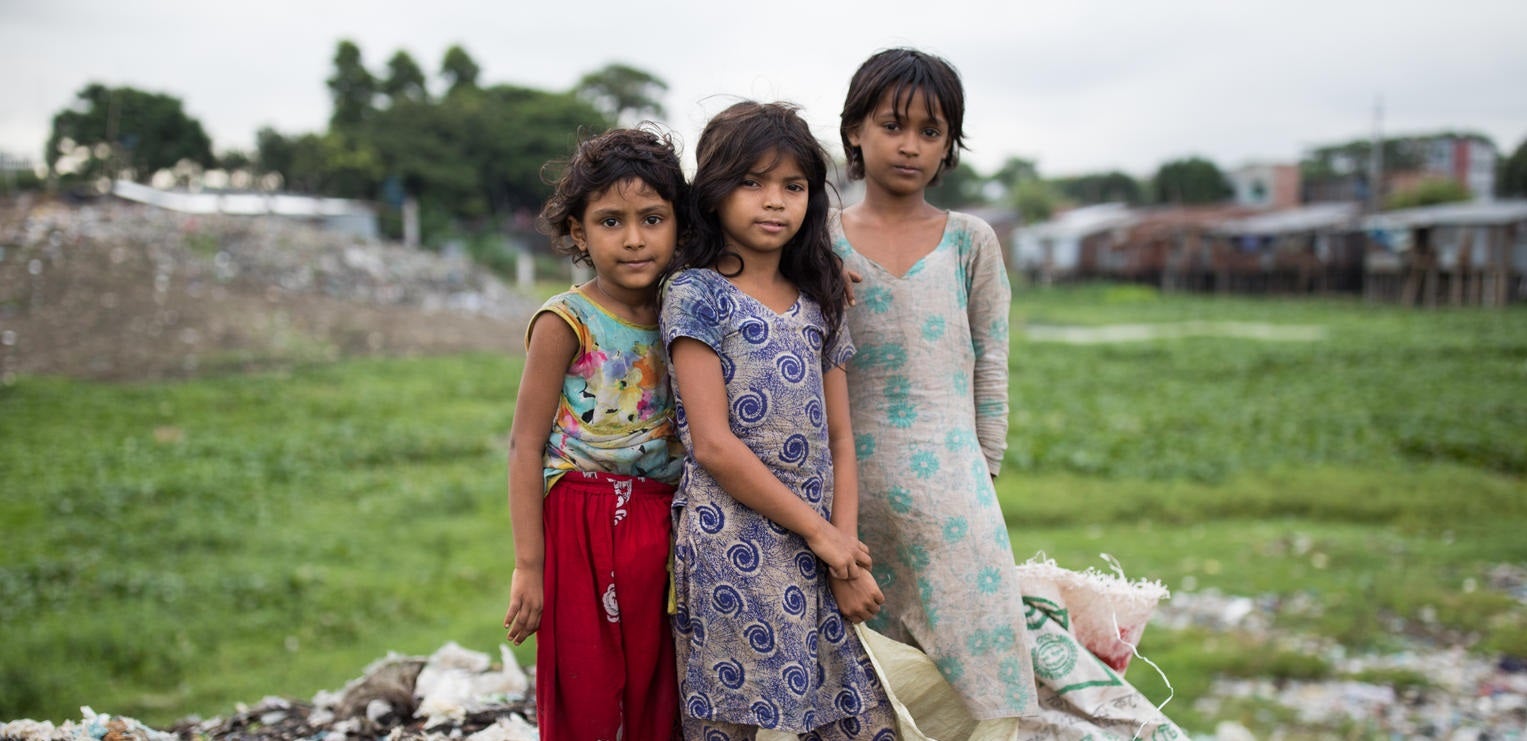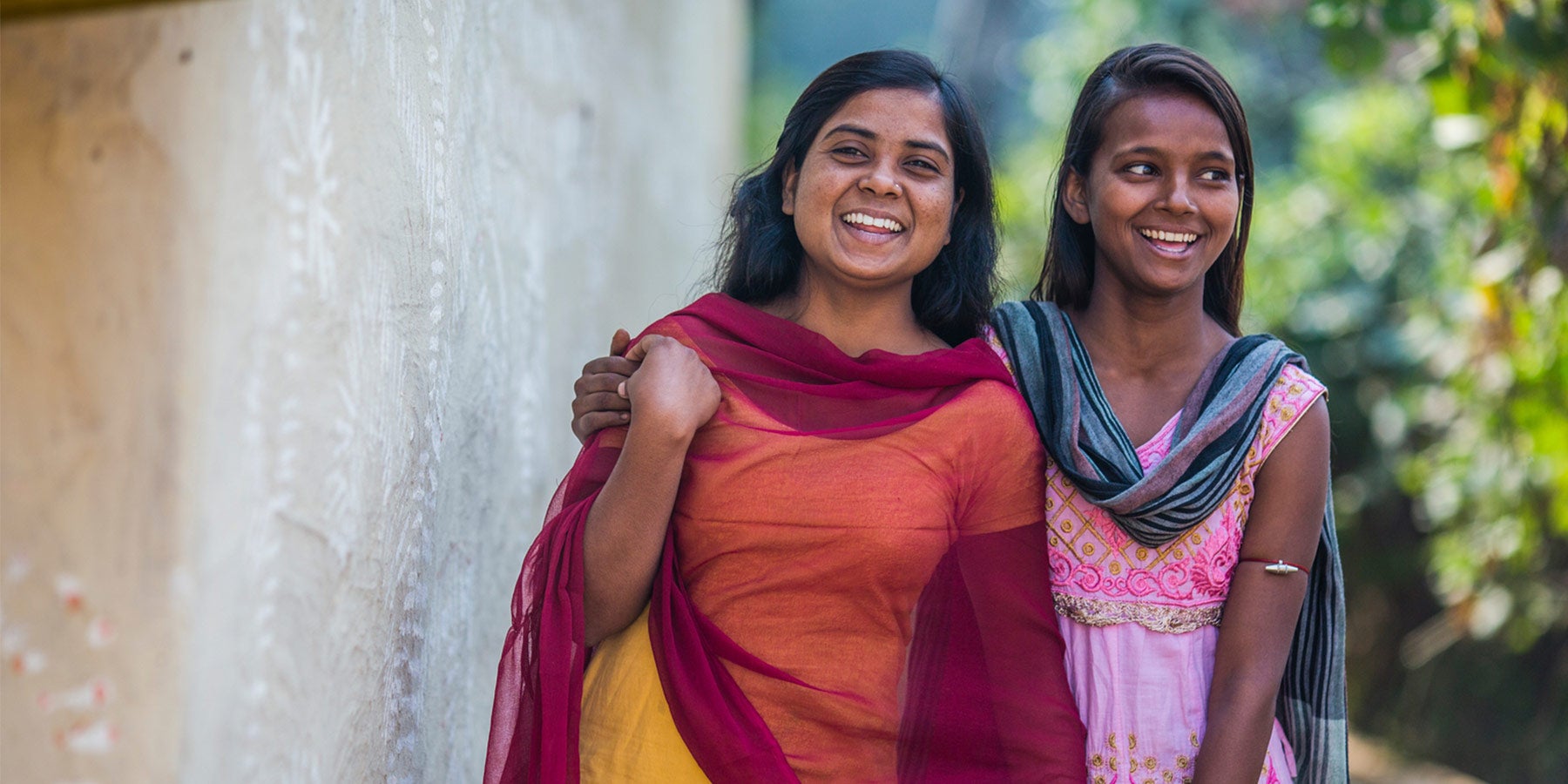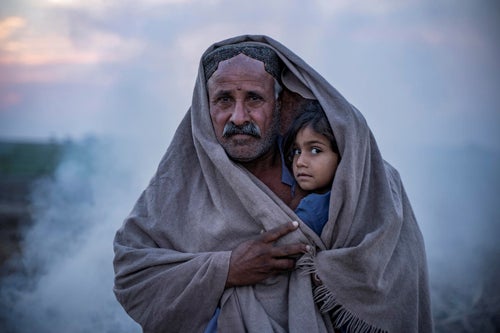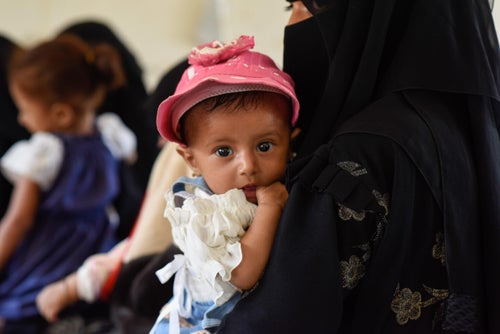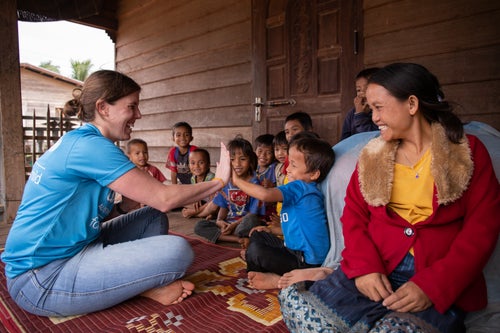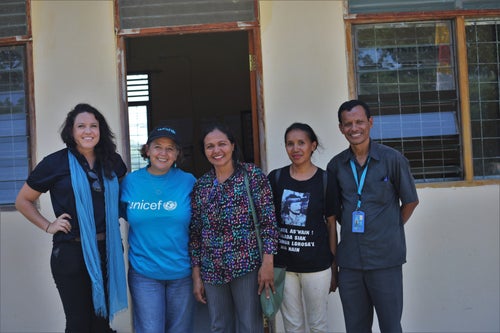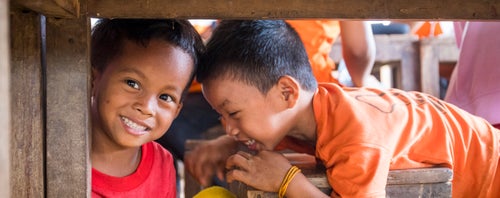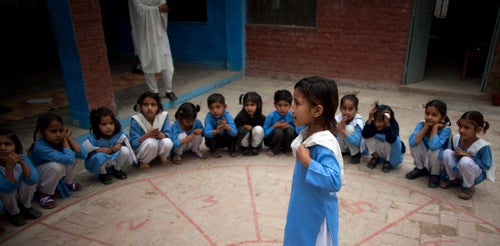Here’s the impact of a decade of hard work campaigning to end child marriage: 25 million girls are now free to play, learn and decide their own futures.
Quick facts
- There has been a 15 per cent decrease in girls getting married since 2008.
- Most of the progress is in South Asia, where the child marriage rate has dropped from 50 to 30 per cent.
- This is promising but 12 million girls still get married as children every year.
We all know the bad news: too many girls are still forced to marry early. The good news is that there is a global network of community champions, lawmakers, organisations and young people changing behaviours and keeping girls safe from child marriage.
UNICEF is proud to be part of that network. For years we’ve run education campaigns, helped governments make child marriage illegal, supported victims of violence and funded youth groups who create change in their own communities.
Our work is paying off. In the last decade, the global community has driven a 15 per cent decrease in girls marrying dangerously early.
What was once a horrific reality for one out of every four girls around the world will now harm millions less every year. In South Asia, the rate of child marriage has dropped more than a third - from nearly 50 per cent to 30 per cent. In India, where girls’ education rates have increased and the government has invested in adolescent girls and run campaigns against child marriage, the number of girls getting married has almost halved.
13-year-old Sonamoni’s wedding day
Early marriage is not just a bad wedding day. It can mean a lifetime of danger and disadvantage.
Sonamoni’s wedding day was one of her last days of freedom. Standing at the altar in her village in Bangladesh, she knew she was about to leave the comfort and support of her family. She would be pulled out of school, forced to abandon her dreams and pressured into having a baby at just 13 years old, before her body was ready. “I spent three months in hospital after childbirth due to bleeding,” she says.
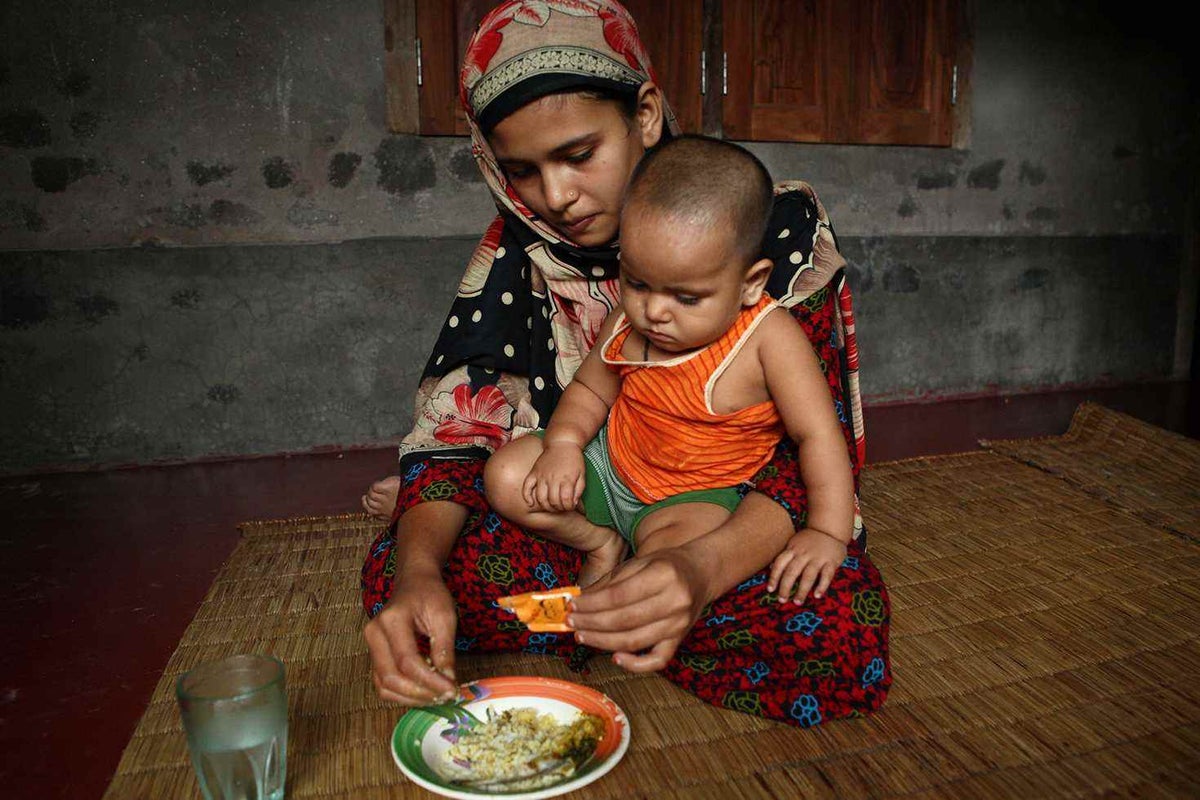
Sonamoni wasn’t old enough to have a baby - not physically and not emotionally - but she barely had a choice. She’s now a mother and wife when she deserves to be at school, laughing with friends and building the future she wants.
Sonamoni’s story is shockingly common. An estimated 650 million women alive today were married as children, making them more likely to:
- Leave school early and without graduating;
- Be abused by their partners;
- Give birth before they turn 18;
- Suffer complications during pregnancy; and
- Experience and continue intergenerational poverty.
If we let girls grow up safe, go to school and choose for themselves, the world would be a different place: women would have the education and freedom to lift themselves out of poverty, fewer girls would die giving birth and their babies would be healthier and more likely to survive childhood. When girls are allowed to be girls, everybody wins.
What is UNICEF doing to stop child marriage?
UNICEF works in 190 countries around the world, protecting the most vulnerable children from dangers like child marriage, forced labour and deadly disease.
- In Chad, we helped run a nationwide campaign to change attitudes about child marriage, and supported the legislation to make the practice illegal.
- In Bangladesh, we’re funding local youth groups to talk to vulnerable girls about child marriage and teach them their rights.
- In Laos, we’re helping young victims of sexual violence to access justice.
- In low-income communities, we’re giving families cash transfers so they can afford to send their daughters to school.
- Around the world, we’re working with governments to strengthen and enforce laws that establish 18 as the minimum age for marriage.
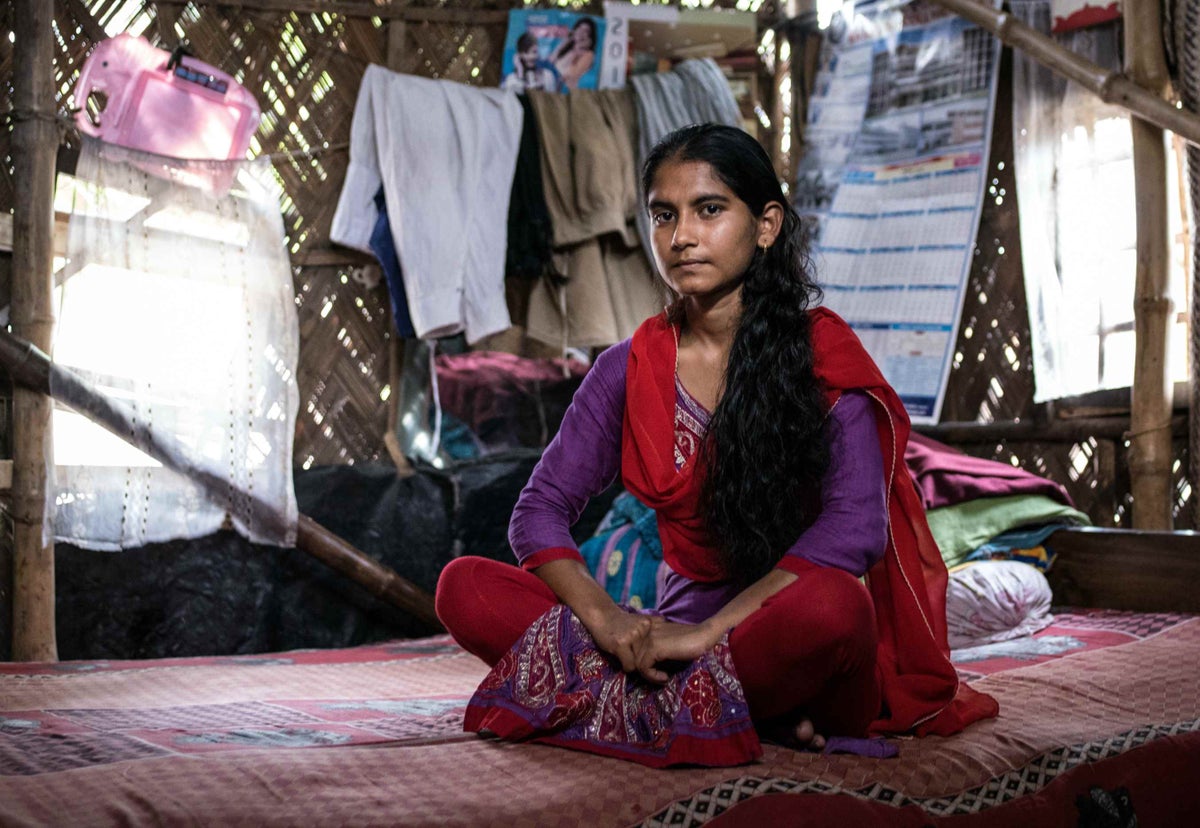
When 14-year-old Shampa’s family told her she had to get married, she enlisted the support of a local ‘adolescent club’. They sprang into action, arriving at her parents’ doorstep to discuss the risks of early marriage, to highlight the education Shampa would be missing out on and to remind them that child marriage is illegal in Bangladesh. It worked: Shampa’s family dropped their plans to force her marriage and she’s determined to stay in school and become a banker one day.
We can’t stop now
Every time a child marriage is prevented another girl gets the chance to fulfill her potential. But we still have so far to go. 12 million girls still will be married this year. The world has pledged to end child marriage by 2030 and if we’re going to achieve that Global Goal we’ll need to accelerate our progress even more.
Stopping child marriage is possible. We can replicate the success we’ve seen in Ethiopia and India - where child marriage rates have dropped 20 and 50 per cent respectively in the last ten years. Rwanda has brought the prevalence of child marriage below 10 per cent. Even though extreme population growth makes progress difficult, the number of child brides is beginning to decrease in countries like Egypt and Bangladesh.
UNICEF and our partners know exactly what to do - we just need your help to reach every child in danger. That’s why we have a special community of UNICEF supporters called Global Parents who help us keep children safe from dangers like child marriage, preventable disease and natural disaster. From right here in Australia, they’re reaching children in Chad, Syria and wherever children are in danger around the world.
Each new Global Parent helps us go further, work faster and keep more children safe. Sign up today to help protect children from early marriage, labour and exploitation, and to deliver life-saving water, health and nutrition supplies wherever the need is greatest.
Related articles
Stay up-to-date on UNICEF's work in Australia and around the world


